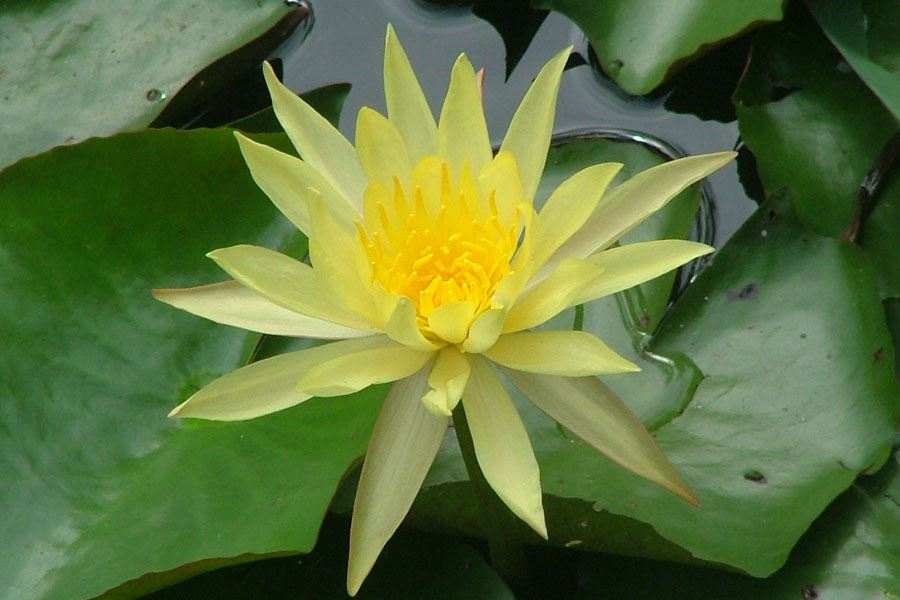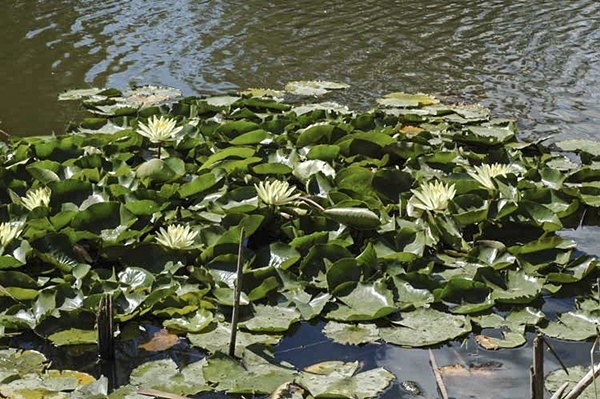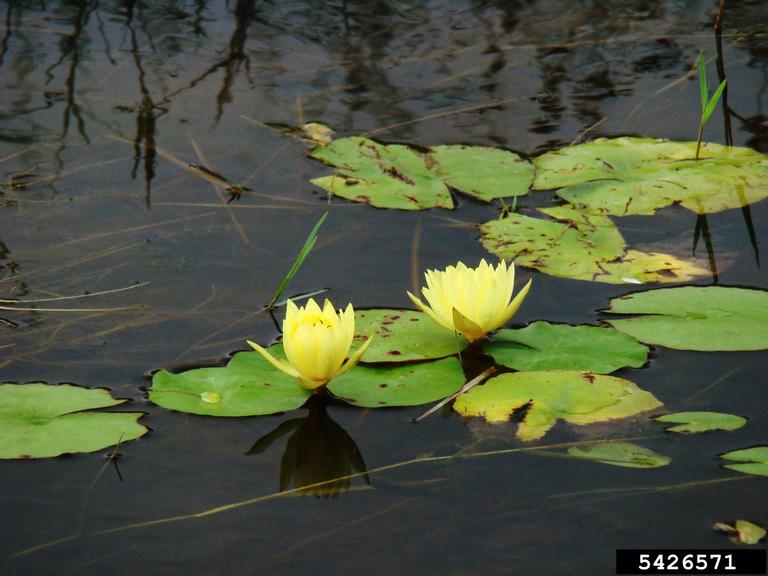Yellow Waterlily
weed identification
Yellow Waterlily has thick rhizomes and long, spongy creeping stolons which bear bunches of small yellow roots that resemble miniature bananas. The large, flat leaves are green with purple or brown patterning, and float on the surface of the water. The floating lotus flowers have yellow petals and pointed, star-like, greenish-yellow sepals. Each flower lasts one week. Once established, it becomes difficult to eradicate.
Prefers slow moving water bodies such as ponds, dams, lakes, and wetlands.
Vegetatively or by seed.
The plant can grow from seedlings or send out new shoots from its stolons.
There are none in Australia.
What does Yellow Waterlily look like?
Disadvantages of Yellow Waterlily
Full coverage of a pond or dam by Yellow Waterlily can cause significant problems such as:
- Reduce oxygen diffusion
- Shades out all submerged vegetation preventing further growth and causing death
- Outcompete native vegetation
- Causes fish and other aquatic life death
- Provides breeding ground for mosquitos
- Changes the water chemistry to favour harmful algae and bacteria
- If left untreated, Yellow Waterlily can render the water unusable and make treatment far more costly than if initially dealt with
treatment
AQ200 Aquatic Herbicide + Wetting Agent – Chemical Herbicide designed to kill free floating weeds quickly. Use on mild to severe infestations.
Aquatic Weed Rake and Razer combo – DIY physical removal. Ideal for mild infestations, sensitive water bodies or to aid herbicide treatment.
Aquatic Harvesting – Large amphibious machine that clears the surface of floating aquatic weeds. Book this service for severe infestations or for larger water bodies.
prevention options
Aerating Fountains – Reduces the severity and likelihood of aquatic weed infestations. Use in any body of water.







